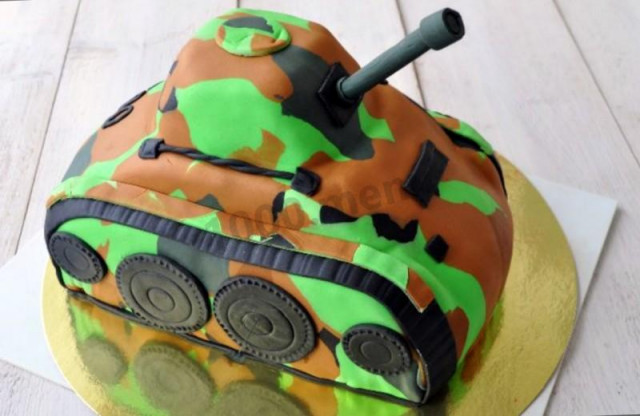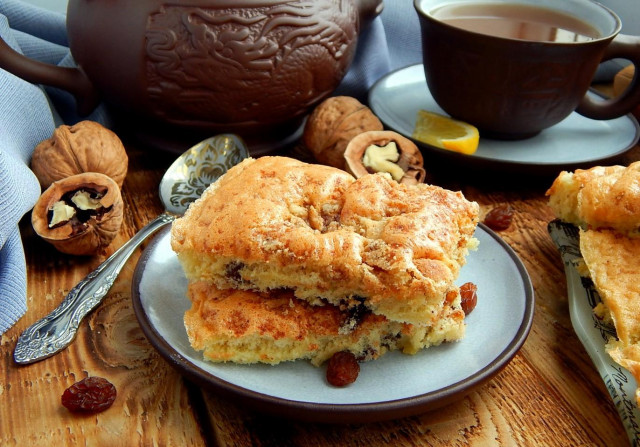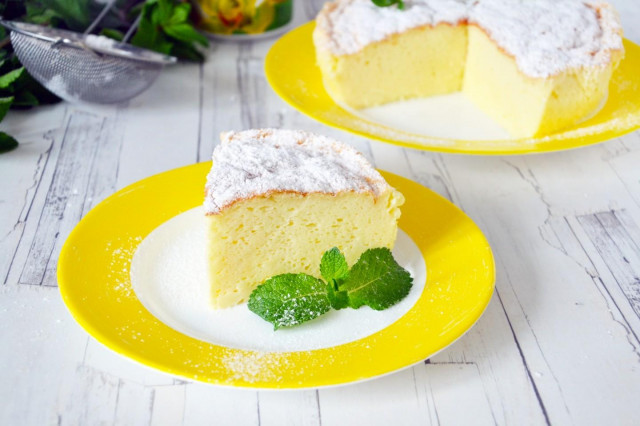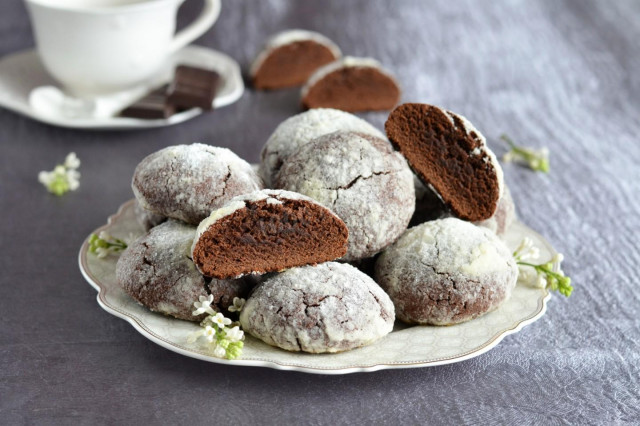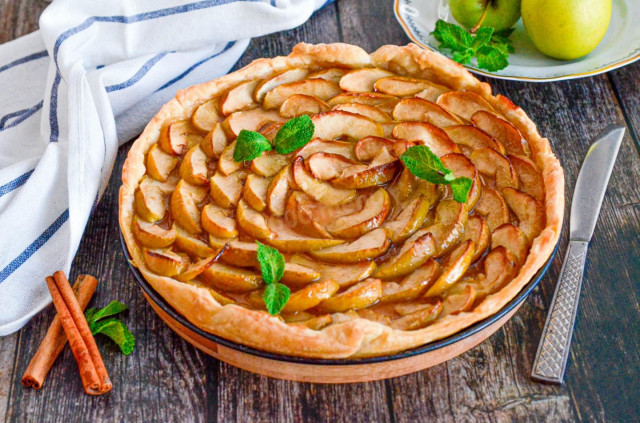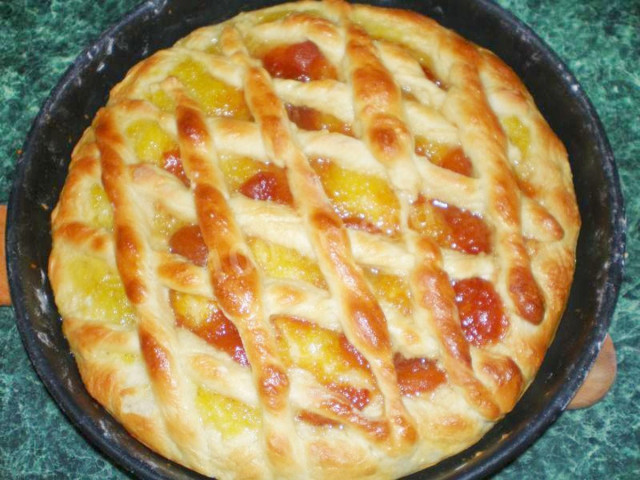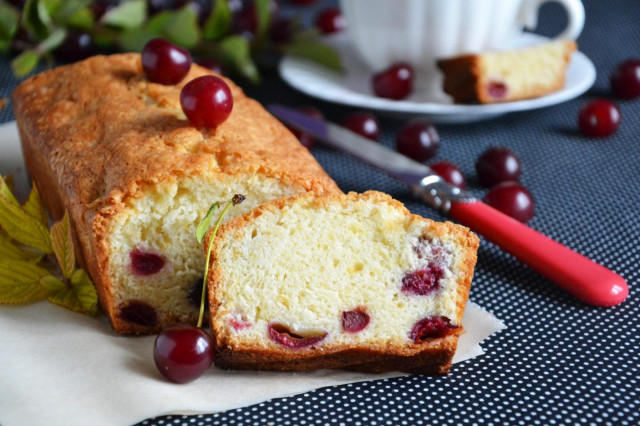Composition / ingredients
Step-by-step cooking
Step 1:
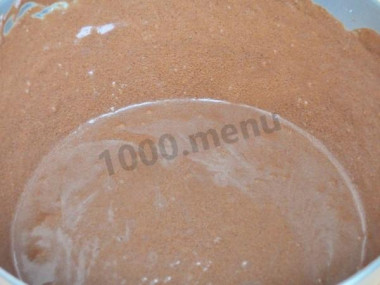
In a bowl, grind the softened butter with sugar. Mix milk with cocoa powder in a separate container, beat in chicken eggs. Mix everything, pour it into the oil mixture. Add flour and baking powder. Be sure to sift the flour to saturate it with oxygen, then the baking will turn out lush and airy. Knead a thin, homogeneous dough. Pour the dough into a heat-resistant mold with a diameter of 23 cm. Bake in a preheated 190 degree oven for about 50 minutes.
Step 2:
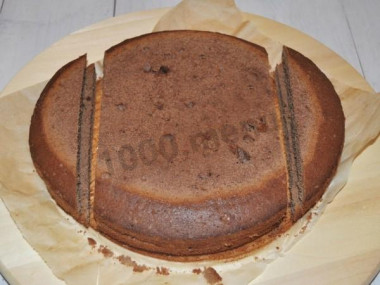
Remove the finished biscuit from the oven, cool, leave for at least 6 hours. Then cut the cake lengthwise into 3 cakes. Trim the sidewalls. Make a tower and elevation out of the sidewalls.
Step 3:
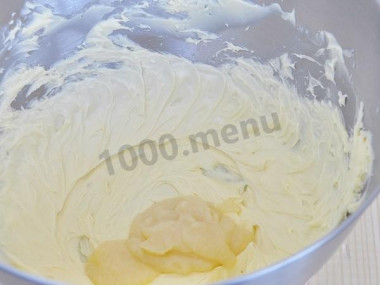
Prepare the cream. In a container, beat the soft butter with a mixer. Add condensed milk in parts, without stopping whipping. The cream should be lush and airy.
Step 4:
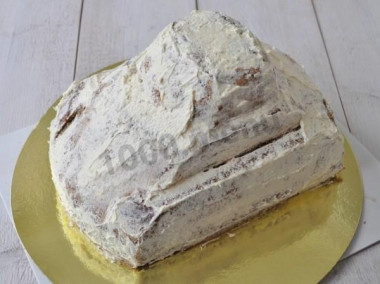
Spread the cream on the cakes, fold them in the right order. Cover the whole structure with oil cream. Put it in the refrigerator for less than 1 hour.
Step 5:
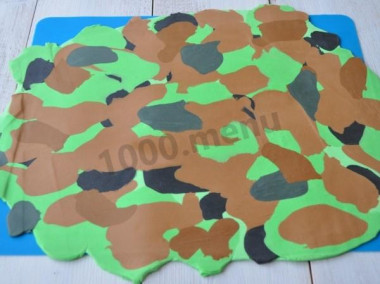
To make a camouflage "grid", paint the mastic with gel food dyes. To do this, the mastic must be divided into 6 parts and painted 2 parts in a shade of green, 2 brown and one each in black and dark gray. Sprinkle the work surface with powdered sugar, roll out a green cake (3-4 mm thick), put small pieces of other colors on top and roll out again.
Step 6:
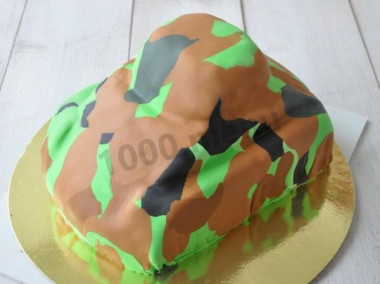
Cover the tank with a layer of mastic. Smooth and smooth well. Having leveled the top and moving to the sides, do not return to smoothing the top again, as the mastic will stretch. Trim the excess.
Step 7:
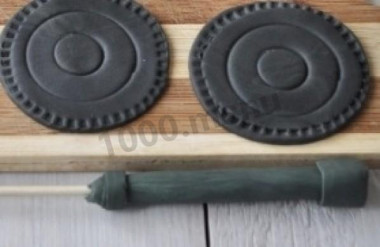
Use black mastic to make track belts, guns and wheels. The gun should be mounted on a wooden skewer. You can also add a few small details and scraps of mastic to complete the picture.
Step 8:
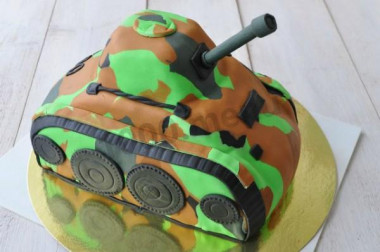
Attach all the details. The cake is ready!
,.Be sure to wash the eggs before use, as even the seemingly clean shell may contain harmful bacteria. It is best to use food detergents and a brush.
Be prepared for the fact that you may need more or less flour than indicated in the recipe. Focus not on the amount of flour, but on the desired consistency of the dough. Read a lot of useful information about flour and its properties in this article!
Instead of sugar, you can use a sweetener that is not afraid of heat treatment.
Keep in mind that everyone's ovens are different. The temperature and cooking time may differ from those specified in the recipe. To make any baked dish successful, use useful information in this article !
Any heat-resistant mold is suitable for this recipe. If you use a silicone mold, then you do not need to smear it with butter or margarine. But it is better to lightly lubricate metal, ceramic or glass dishes with vegetable oil so that the baking does not burn.
Caloric content of the products possible in the composition of the dish
- Whole cow's milk - 68 kcal/100g
- Milk 3.5% fat content - 64 kcal/100g
- Milk 3.2% fat content - 60 kcal/100g
- Milk 1.5% fat content - 47 kcal/100g
- Concentrated milk 7.5% fat content - 140 kcal/100g
- Milk 2.5% fat content - 54 kcal/100g
- Chicken egg - 157 kcal/100g
- Egg white - 45 kcal/100g
- Egg powder - 542 kcal/100g
- Egg yolk - 352 kcal/100g
- Ostrich egg - 118 kcal/100g
- Whole durum wheat flour fortified - 333 kcal/100g
- Whole durum wheat flour, universal - 364 kcal/100g
- Flour krupchatka - 348 kcal/100g
- Flour - 325 kcal/100g
- Granulated sugar - 398 kcal/100g
- Sugar - 398 kcal/100g
- Condensed milk with sugar - 324 kcal/100g
- Butter 82% - 734 kcal/100g
- Amateur unsalted butter - 709 kcal/100g
- Unsalted peasant butter - 661 kcal/100g
- Peasant salted butter - 652 kcal/100g
- Melted butter - 869 kcal/100g
- Cocoa powder - 374 kcal/100g
- Baking powder - 79 kcal/100g
- Food coloring - 0 kcal/100g
- Mastic - 393 kcal/100g

